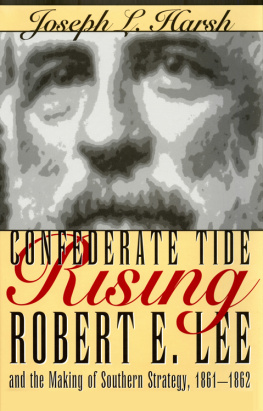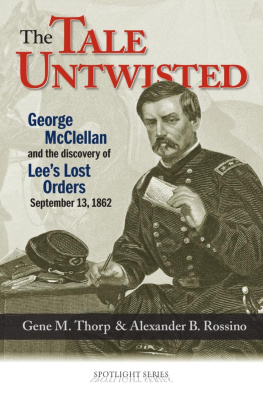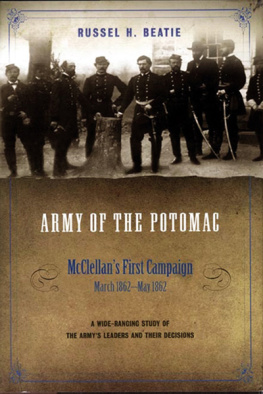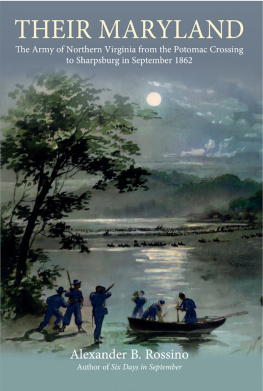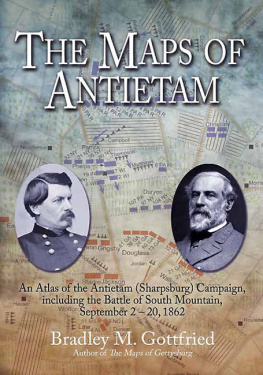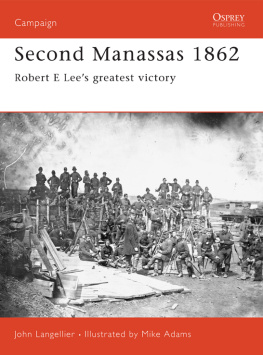2000 by The Kent State University Press, Kent, Ohio 44242
All rights reserved
Library of Congress Catalog Card Number 98-53995
ISBN 0-87338-640-x (cloth)
ISBN 0-87338-641-8 (paper)
Manufactured in the United States of America
06 05 04 03 02 01 00 5 4 3 2 1
Library of Congress Cataloging-in-Publication Data
Harsh, Joseph L.
Sounding the shallows : a Confederate companion for the Maryland
campaign of 1862 / Joseph L. Harsh.
p. cm.
Companion vol. to: Taken at the flood.
Includes bibliographical references (p. ) and index.
ISBN 0-87338-640-x (cloth : alk. paper) ISBN 0-87338-641-8
(paper : alk. paper)
1. Maryland Campaign, 1862Miscellanea. 2. Lee, Robert E.
(Robert Edward), 18071870Military leadershipMiscellanea.
3. Confederate States of AmericaMilitary policyMiscellanea.
I. Harsh, Joseph L. Taken at the flood. II. Title.
E474.61.H372 2000
973.7336dc21 98-53995
British Library Cataloging-in-Publication data are available.
With love,
for
Trudy, Laura, Drew, Greg
&
Margaret Lucille Harsh (19111995)
&
Joseph Paul Harsh (19131975)
There is a tide in the affairs of men
Which, taken at the flood, leads on to fortune.
Omitted, all the voyage of their life
Is bound in shallows and in miseries.
William Shakespeare, Julius Caesar, IV.3
This is a book of many questions and scant answers. It charts the depths and shallows of a third of a century of sporadic study that culminated in a focused seven-year research project. It is intended to be a companion to Taken at the Flood: Robert E. Lee and Confederate Strategy in the Maryland Campaign of 1862.
Even the most respectable historical narratives are composed of interpretations, educated guesses, informed speculations, and (regrettably) few facts. Sometimes, statements about mundane matterssuch as weather, headquarters sites, and if an individual was on horseback or notare, unavoidably, speculations based on contradictory, ambiguous, and fragmentary evidence. Always, statements about larger, critical matterssuch as the motivation of leaders, the causes of events, and the meaning of resultsmust be interpretations. Such are the inescapable consequences of the nature of historical study.
Rather than despairing at such a state of affairs, the historian might take heart. For one thing, there is no danger that we will ever exhaust our subject. Even if the seemingly unending stream of newly discovered sources were to dry up, we can always continue to reinterpret, reexamine, and reconsider the works of each other. On another, more serious level, the essential ambiguity of history ought to compel us to view our own effortsno matter how long in years or careful in executionas no more than a contribution toward an evolving understanding of the past.
It is my belief that because of the nature of our craft, the historian owes two overriding obligations to his audience. The first is to make our interpretations as educated, informed, and objective as possible. The second is to lay out fully and clearly the bases for the interpretations, so that those who follow, whether their own studies cause them to confirm or to reject the conclusions, will not have to start again at the beginning.
In deference to both obligations, and as an integral part of the preparation for writing Taken at the Flood, I attempted to identify those areas that would for any reason pose a problem in constructing the narrative. The topics on the list I compiled included: issues that had in the past been the subject of controversy among historians (Why did Lee cross the Potomac?); points of contradictory testimony by eyewitnesses (Was there fog at Harpers Ferry on the morning of September 15?); new questions that occurred to me during the research that seemed never to have been covered by historians (Did Lee know, when he dictated S.O. 191, that McClellan commanded the opposing army?); and running topics that provided consistent details for the entire project (day-by-day weather in the Maryland campaign and a revised table of organization for the Army of Northern Virginia).
Each topic became the subject of a research study. These studies assumed a variety of forms, including lists, charts, calendars, statistical tables, chronologies, rosters, itineraries, identifications of obscure persons and places, and historiographical essays. Before starting to write, I had compiled forty research studies; by the time I had finished, the number had grown to nearly three hundred.
Where possible I condensed and incorporated the results of the research studies into the endnotes of Taken at the Flood. For convenience, a list of those already published, with reference to their locations, is given in . The remainder of the studies either resisted condensation or, even when abridged, were still unwarrantably long for endnotes. It is these remainders that are here presented as research appendixes.
None of the research offered here should be considered definitive. In no instance do I claim to have rendered the last word on a subject. It is my more modest hope that I have been able to contribute a first word by identifying problem areas, laying bare the sources I have been able to discover, and pointing out a direction for future research.
To the list of those named in Taken at the Flood to whom I am indebted for their assistance, I need to add John Frye, curator of the Western Maryland Room of the Washington County Free Library in Hagers-town. John provided invaluable help in locating population figures for small Maryland towns.
In addition to my wife and children, this book is dedicated to my parents, Margaret Lucille and Joseph Paul Harsh.
Confederate Almanac for
the Maryland Campaign of 1862
INTRODUCTION
Almanac information (sunrise, sunset, moon phase) is from the 1862 edition of Jonathan Grubers farmers almanac for Hagerstown and area. Cloud cover is expressed on a scale from 1 to 10, with 1 being cloudless and 10 fully overcast. Wind force is given in miles per hour. These are the only extant weather statistics scientifically gathered in the western Maryland region at the time. Information from the Georgetown, D.C., station will be included in a Federal Almanac in a future study.
The personal observations are taken from Confederate diaries, letters, and memoirs. They are included for two reasons. First, the scientific records do not describe marching conditions, nor do they reflect human reactions to the weather. Hence, some days that record moderate temperatures in the seventies were nonetheless perceived as very warm and hot by the soldiers. Second, weather conditions sometimes varied even a short distance from Frederick. For example, note that despite the widespread observations of rain on September 12, no precipitation was recorded in Frederick. Because of this, the personal observations are grouped by command, and an attempt is made to identify the location of each unit.


